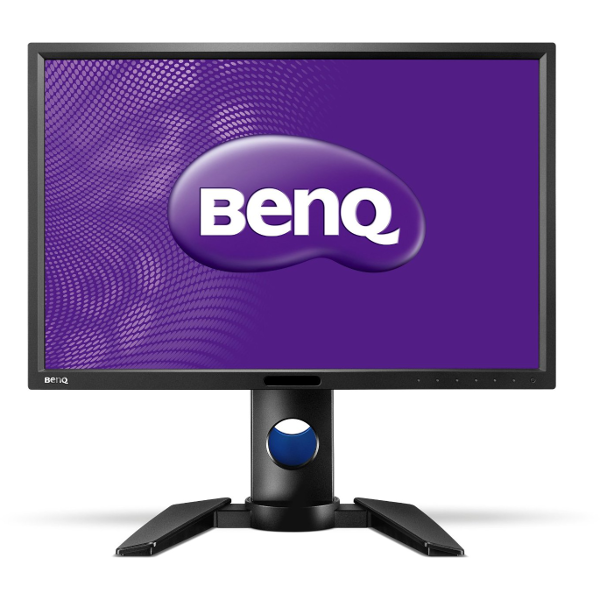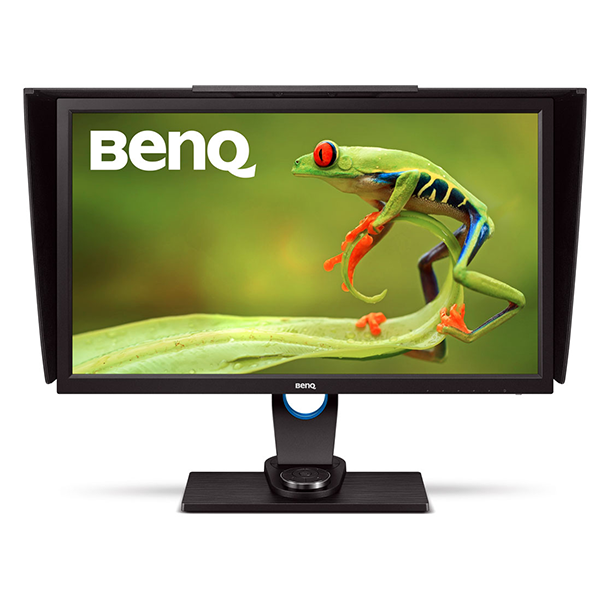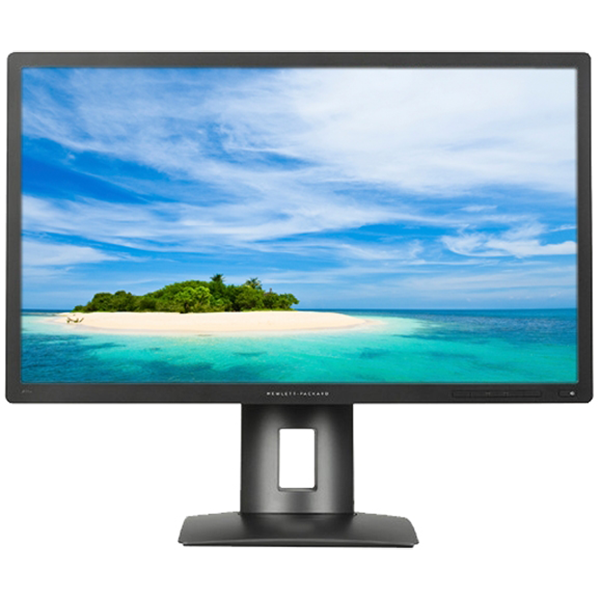Philips 276E6 27-inch Quantum Dot Monitor Review
We've been hearing about Quantum Dots for a while but Philips' 276E6 is the first computer monitor to use the technology. It's a 27-inch IPS-ADS screen with FHD resolution and an Adobe RGB color gamut. Today, we check it out in our labs.
Why you can trust Tom's Hardware
Brightness And Contrast
To read about our monitor tests in-depth, please check out Display Testing Explained: How We Test Monitors and TVs. Brightness and Contrast testing is covered on page two.
Uncalibrated – Maximum Backlight Level
The 276E6 is a somewhat unique product because it offers a wide gamut at a very low price point. It isn't marketed as a professional display, so on the surface, it seems unfair to compare it to five high-end screens. But considering what it does offer, our test results show it to be a tremendous value even though it won't take home any awards for precise accuracy.
Today's group consists of BenQ's SW2700PT and PG2401PT, NEC's EA244UHD and PA322UHD and the HP Z27q. All five are wide gamut displays with Adobe RGB and sRGB presets.
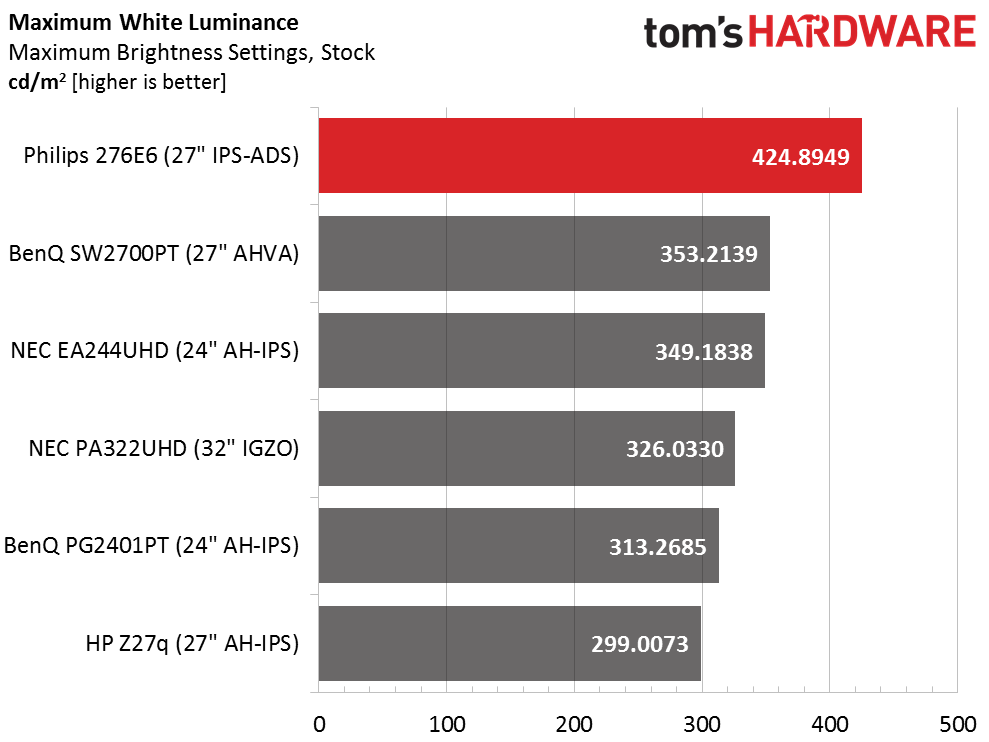
It would seem that Quantum Dots do more than just expand the color gamut. The 276E6 is capable of prodigious light output while consuming relatively little current. We don't see monitors that can exceed 400cd/m2 too often. If your office is brightly lit or has a sunny window, this screen is ideal.
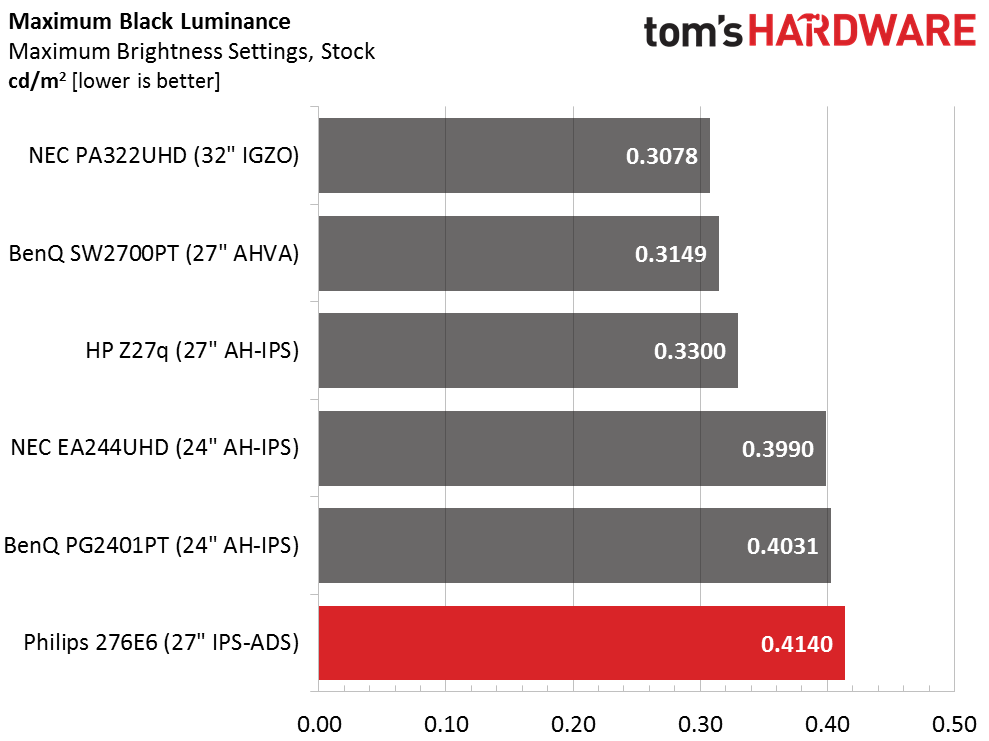
Of course this results in a high maximum black level but as you'll see below, contrast is on par with most other IPS displays.

Max contrast just breaks the 1000:1 mark, which we're glad to see. This is without using the SmartContrast option, which we think crushes detail too much. The only drawback here is that you're forced to use the Adobe RGB mode for full output. That mode is too green for our tastes and should be calibrated. If you don't plan to make adjustments the best mode is Color Temp, which is very accurate but locks brightness at 370cd/m2.
Uncalibrated – Minimum Backlight Level
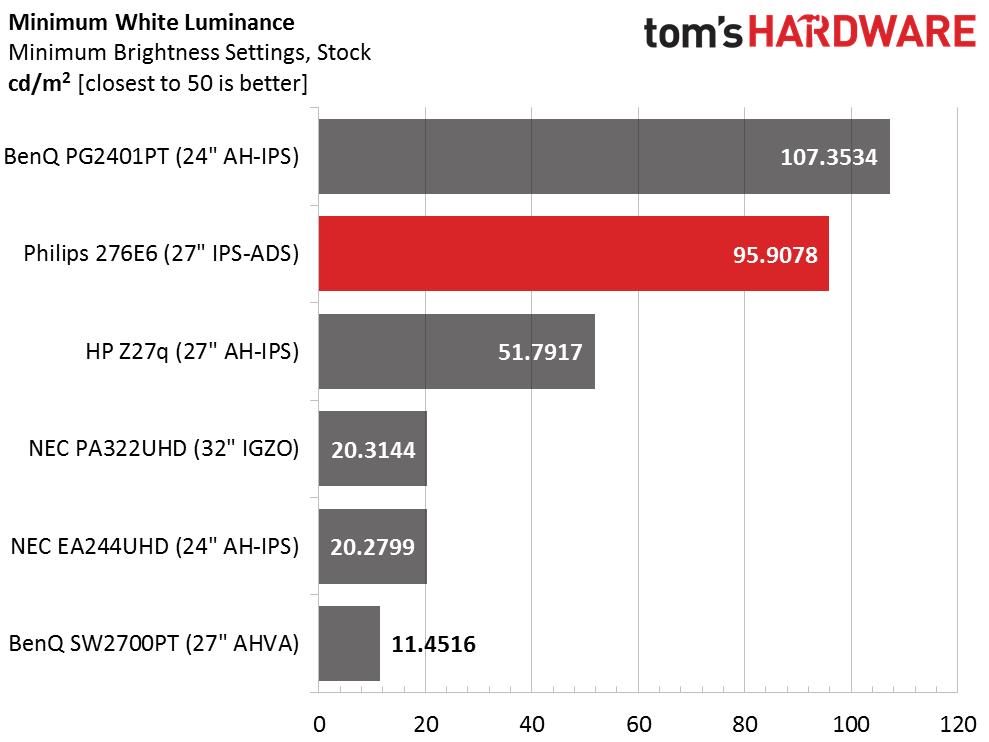
The backlight bottoms out at a somewhat high level of 95.9078cd/m2. Some users prefer 80 or even 50cd/m2 when working in a dark environment.
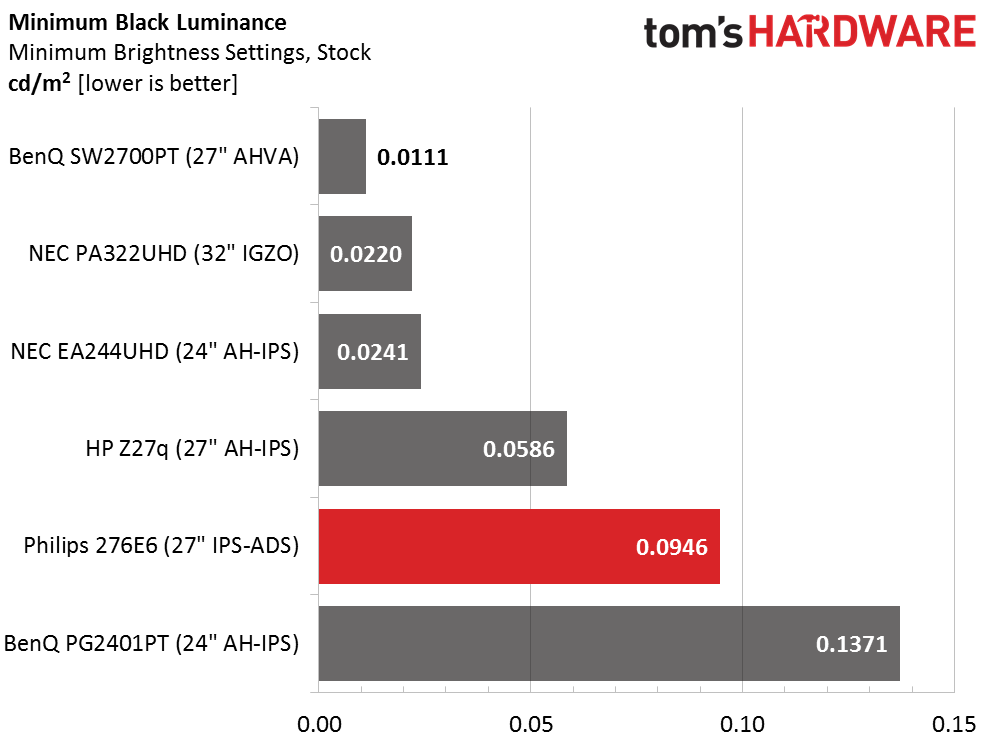
The higher minimum white level means a fifth-place finish in the min-black test. Contrast holds steady at over 1000:1 though.
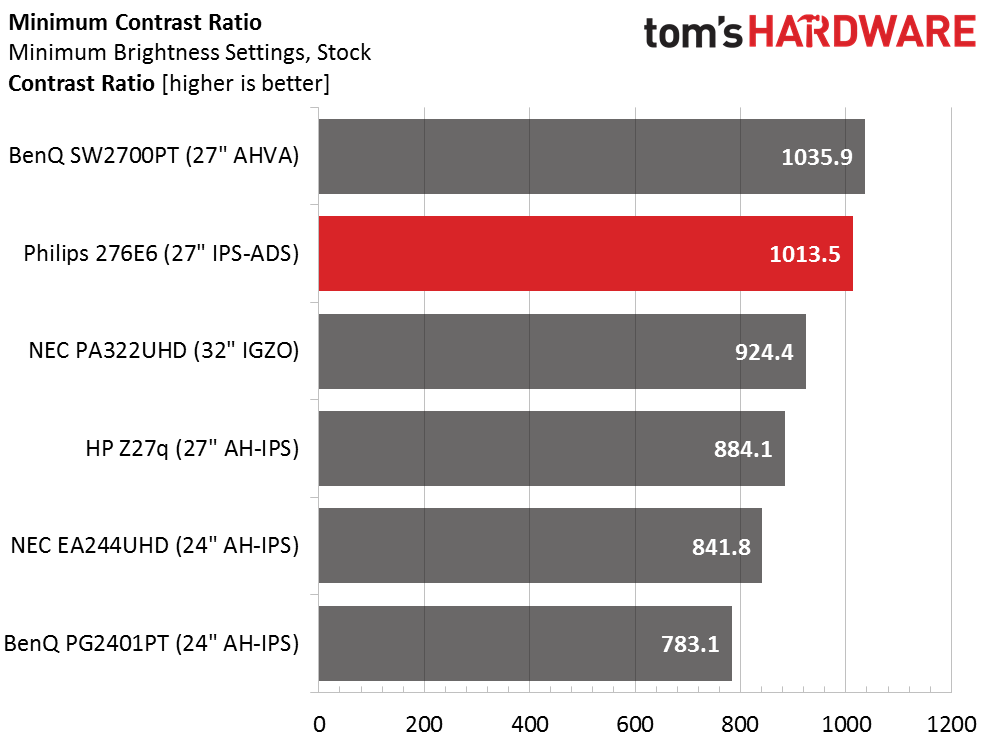
Fortunately the 276E6's shiny new Quantum Dot technology doesn't affect contrast consistency. It still maintains a decent figure of 1013.5:1, which puts it ahead of many professional screens. We'll talk more about its color presentation later but what we're seeing so far is an extremely bright, rich image with plenty of depth and saturation that goes beyond most typical computer monitors.
After Calibration to 200cd/m2
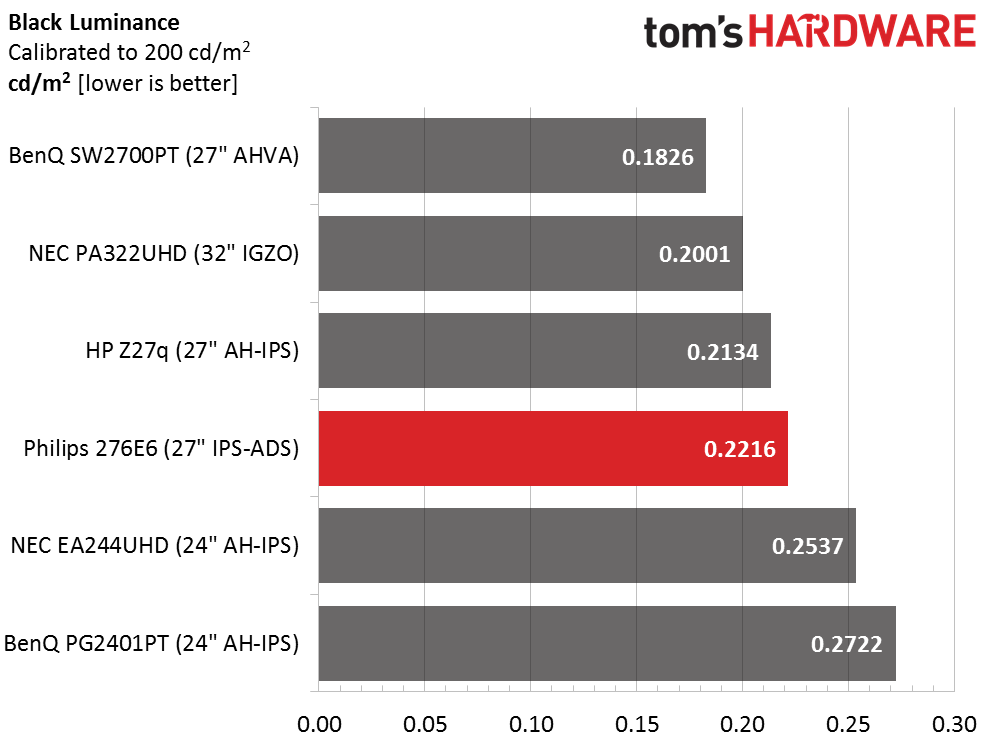
Calibration removes just a bit of the 276E6's contrast performance but the black level is still firmly mid-pack in this group of high-end screens. Aside from the extra brightness afforded by the Quantum Dots this display performs like a typical IPS monitor.
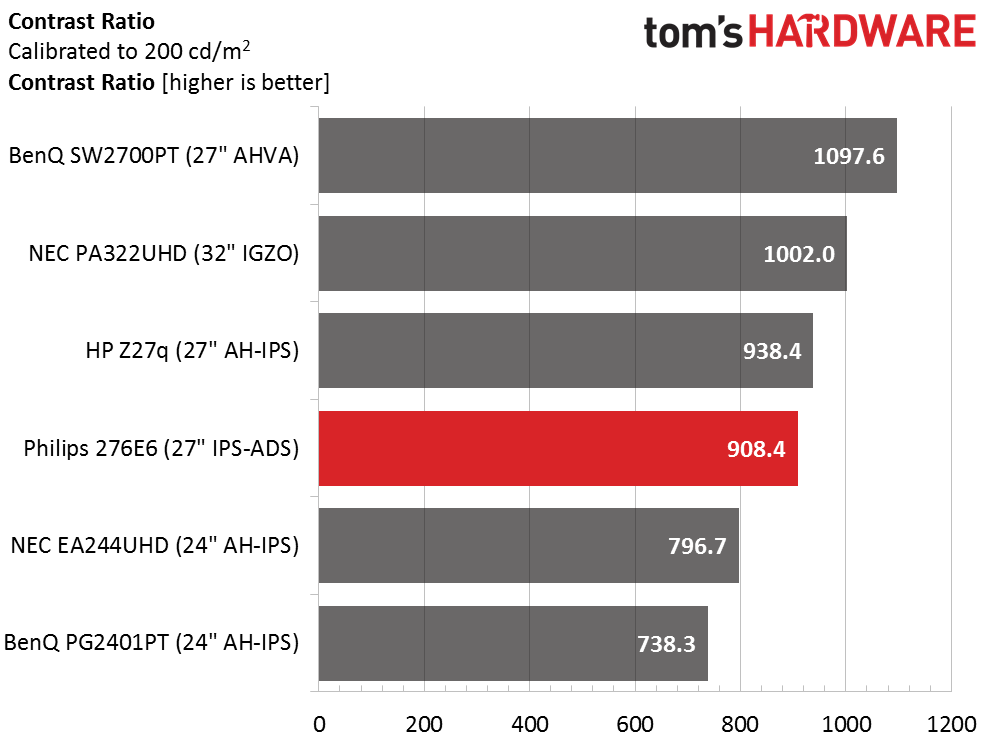
By reducing green and blue in the white balance calibration, and dropping the Contrast slider one click, we've taken the sequential contrast result down by 11 percent. Considering the gains made in grayscale accuracy, we think it's well worth the effort. If you decide to stick with the Color Temp mode, the contrast is lower yet—887.4:1 in fact. It's mainly due to a high black level. Our recommendation is to go with Adobe RGB and dial in our settings above or perform your own calibration.
ANSI Contrast Ratio
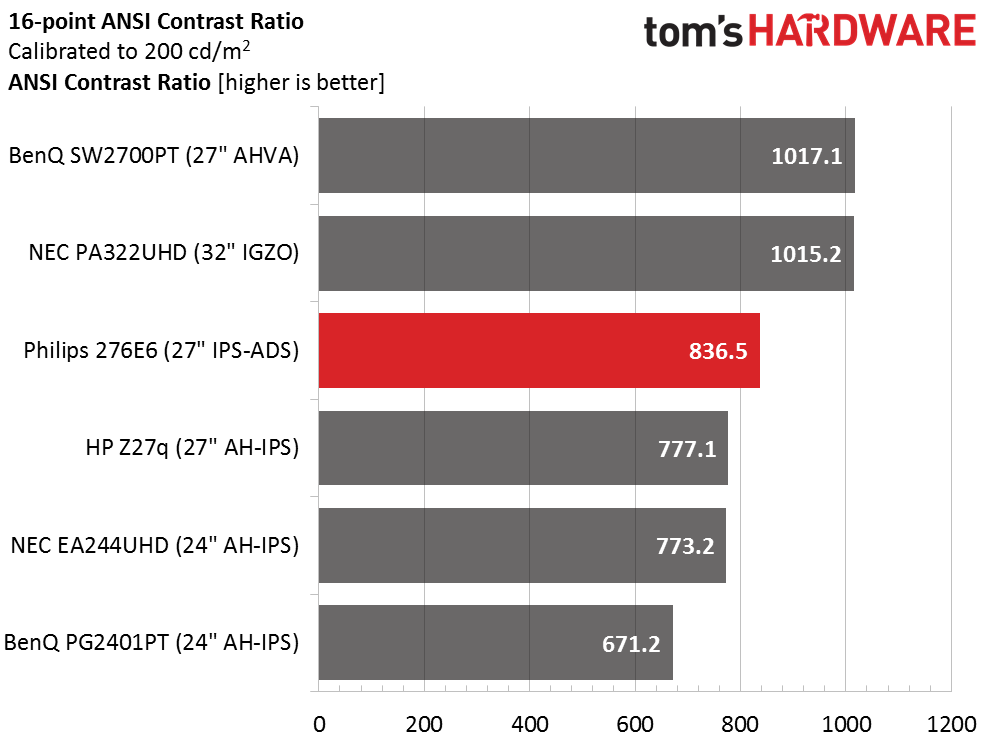
You'll see on page seven that our 276E6 sample's field uniformity is pretty good so this ANSI result is about what we expected. The spoiler is in the lower left portion of the screen where black level is slightly higher than the other zones. Overall though we're happy with this result. The panel seems to be of good quality with excellent clarity and contrast.
Current page: Brightness And Contrast
Prev Page OSD Setup And Calibration Next Page Grayscale Tracking And Gamma ResponseStay On the Cutting Edge: Get the Tom's Hardware Newsletter
Get Tom's Hardware's best news and in-depth reviews, straight to your inbox.

Christian Eberle is a Contributing Editor for Tom's Hardware US. He's a veteran reviewer of A/V equipment, specializing in monitors. Christian began his obsession with tech when he built his first PC in 1991, a 286 running DOS 3.0 at a blazing 12MHz. In 2006, he undertook training from the Imaging Science Foundation in video calibration and testing and thus started a passion for precise imaging that persists to this day. He is also a professional musician with a degree from the New England Conservatory as a classical bassoonist which he used to good effect as a performer with the West Point Army Band from 1987 to 2013. He enjoys watching movies and listening to high-end audio in his custom-built home theater and can be seen riding trails near his home on a race-ready ICE VTX recumbent trike. Christian enjoys the endless summer in Florida where he lives with his wife and Chihuahua and plays with orchestras around the state.
-
xenol Finally! I've been really wanting to see this technology come through to more than two products (that I'm aware of)Reply -
Dan414 I'm not too concerned with power consumption at my desk. How about phones and laptops - will we see quantum dot screens there soon?Reply -
gunbust3r Takes some design ability to make a 27" look more like a 22", good job on those monster size white bezels. :pReply -
sillynilly Love the tech, but the screen specs at that size will make it look like monster dot technology. 1920 x 1080 at 27" looks just horrendous after using a higher rez monitor. Some monitor OEMs are a bit behind the times it seems (although this tech is pretty cool).Reply -
picture_perfect ReplyFor gamers seeking vivid color and a bright image, your monitor has arrived. 18ms is an excellent score for any 60Hz display
I can only LOL and I never LOL. 18ms response (57ms total lag) is just god awful terrible. These arbitrary endorsements are getting lame. -
CaedenV Did I miss where it has a price? It can be the best consumer display in the world, but if it is $5,000 then that would not make it a recommended buy.Reply -
Nintendork All this quantum bull* and still 1000:1? Meanwhile tablets and smartphones using IPS neo from jdi with near 2000:1.Reply
Or even better an RGB OLED display.
